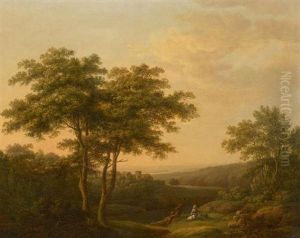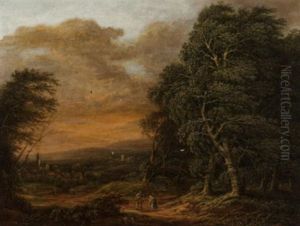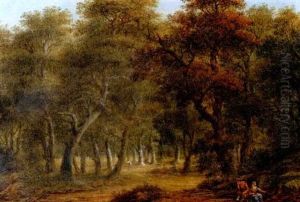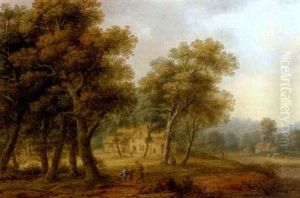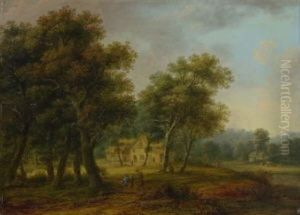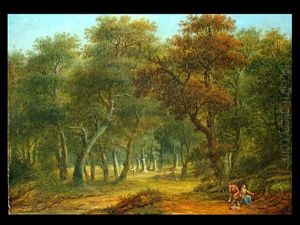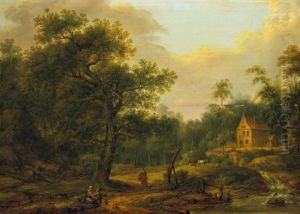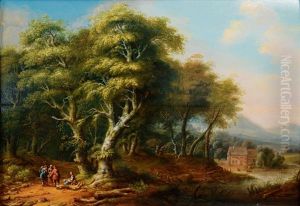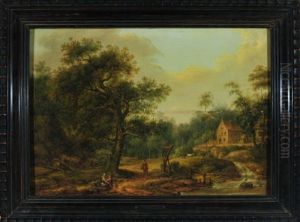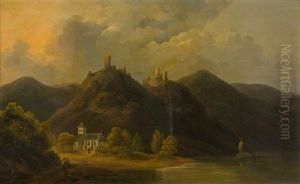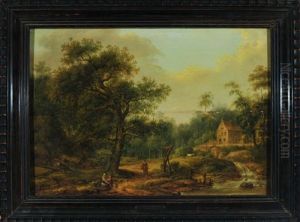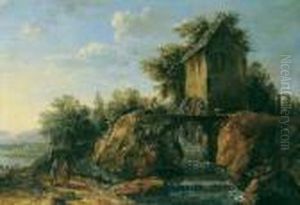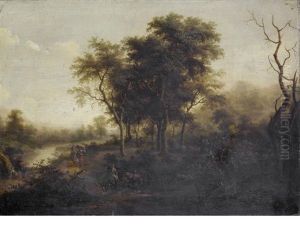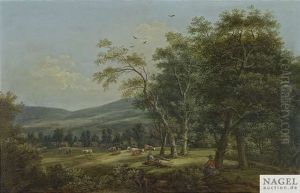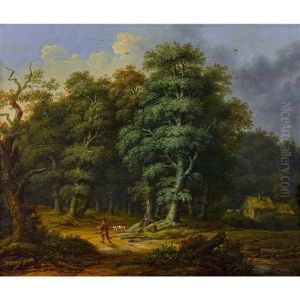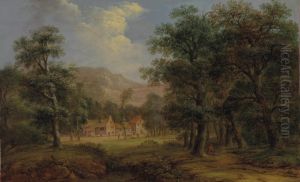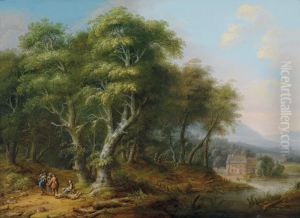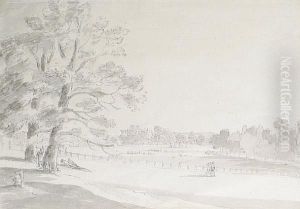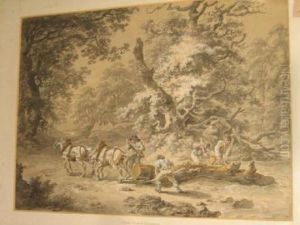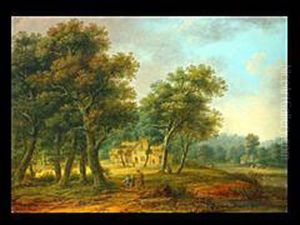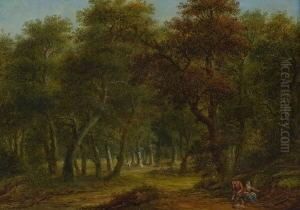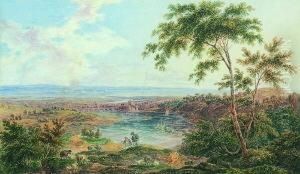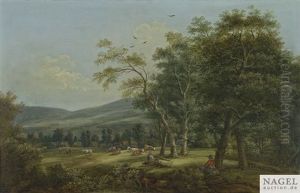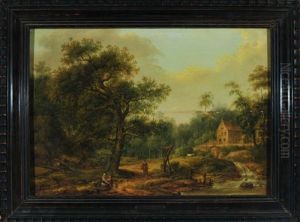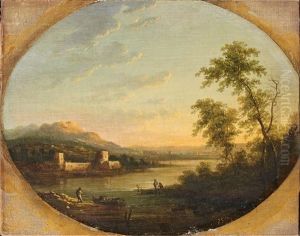Franz Joseph Manskirch Paintings
Franz Joseph Manskirch was a German painter best known for his work in the late 18th and early 19th centuries. Born in 1768 in Koblenz, which was then part of the Electorate of Trier in the Holy Roman Empire, Manskirch was primarily recognized for his contributions to religious and historical painting. He is often associated with the late Baroque and early Neoclassical artistic movements, which were influential during his lifetime.
Manskirch's education in art began in his home region, and he furthered his studies by traveling to various artistic centers in Europe. This exposure to different artistic styles and techniques allowed him to develop a distinctive style that blended traditional religious iconography with the emerging Neoclassical ideals of clarity, harmony, and balance.
Throughout his career, Manskirch produced a number of notable works, many of which were commissioned by religious institutions. His paintings often featured biblical scenes and figures, executed with precision and attention to detail. Manskirch's ability to imbue his religious subjects with a sense of drama and emotional depth made his work popular among his contemporaries.
Despite his success as an artist, there is not a wealth of information readily available about Manskirch's personal life. What is known is that he spent the majority of his career in Germany, where he contributed significantly to the artistic landscape of the time.
Franz Joseph Manskirch passed away in 1830. While he may not be as widely recognized today as some of his contemporaries, his work remains an important part of the art historical canon, particularly in the context of German religious and historical painting of the late 18th and early 19th centuries. His legacy is preserved in the collections of various European museums and churches, where his paintings continue to be admired for their technical skill and emotive power.
